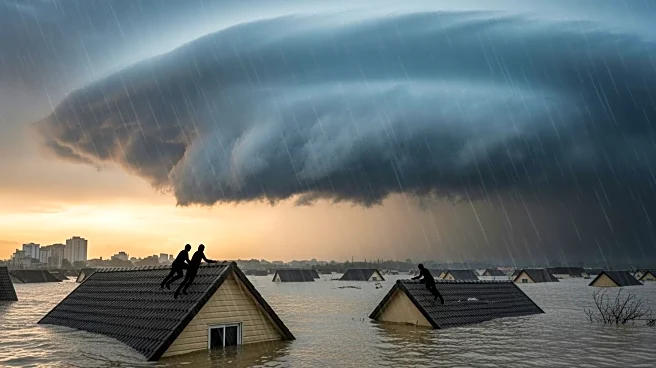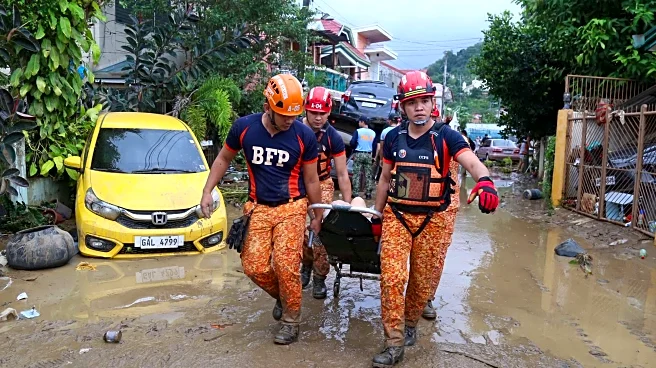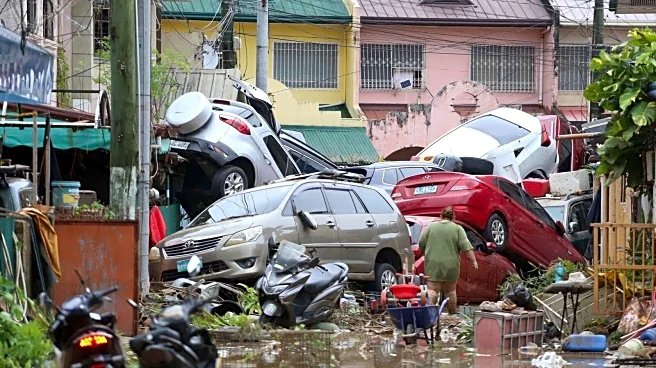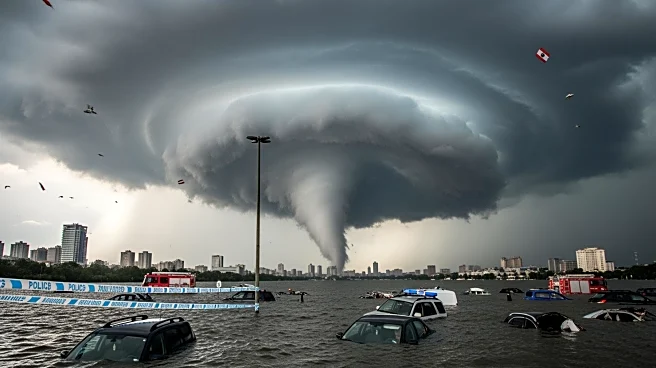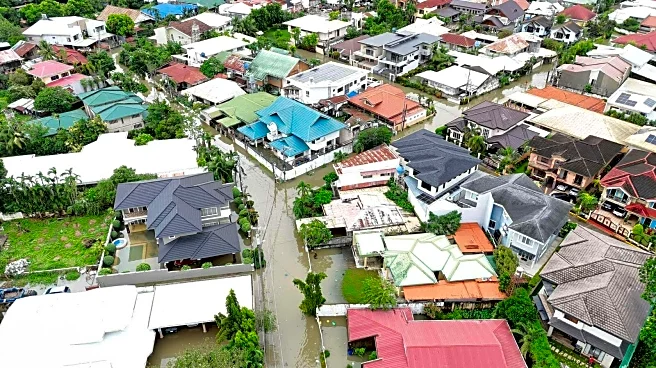What's Happening?
Typhoon Kalmaegi has resulted in at least 26 deaths in the Philippines, primarily due to flooding. The storm has swept across the central part of the country, causing floodwaters that trapped people on rooftops
and submerged vehicles. A separate incident involved the crash of a Philippine air force helicopter, killing six personnel who were transporting humanitarian aid. The typhoon, with winds reaching 81 mph and gusts up to 112 mph, is expected to move into the South China Sea. Authorities had evacuated over 387,000 people prior to the storm's landfall, warning of torrential rains and destructive winds.
Why It's Important?
The impact of Typhoon Kalmaegi highlights the vulnerability of the Philippines to natural disasters, which occur frequently due to its geographic location. The loss of life and widespread damage underscore the need for effective disaster preparedness and response strategies. The crash of the helicopter further complicates relief efforts, potentially delaying aid to affected areas. The situation calls for increased international support and cooperation to assist in recovery and rebuilding efforts.
What's Next?
The focus will be on continuing rescue operations and providing immediate relief to affected communities. Authorities may need to reassess evacuation and disaster response strategies to improve future preparedness. The government is likely to seek international assistance to bolster recovery efforts and address the long-term needs of displaced populations.
Beyond the Headlines
The frequent occurrence of typhoons in the Philippines raises concerns about climate change and its impact on weather patterns. The government may need to invest in sustainable infrastructure and community resilience to better withstand future disasters. Additionally, the role of international aid and cooperation will be crucial in supporting recovery and rebuilding efforts.
